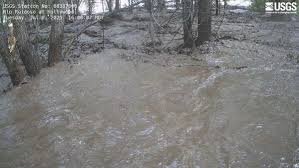
Introduction
Recent flash floods in New Mexico have raised significant concerns among residents and authorities alike. With climate change leading to more intense rainfalls and unpredictable weather patterns, understanding and addressing the risks associated with flash floods has become increasingly vital for the state’s preparedness and resilience.
Recent Events
In mid-October 2023, heavy rainfall overwhelmed the region, particularly affecting areas around Albuquerque and Santa Fe. The National Weather Service reported over 3 inches of rain in less than 24 hours, leading to rapid water accumulation in low-lying areas and streams. Emergency services received numerous calls for assistance, and many residents were evacuated as roads became impassable due to rising waters.
New Mexico’s authorities activated emergency protocols, collaborating with local agencies to provide shelter, food, and resources for those displaced by the floods. The governor declared a state of emergency as the impact of the floods posed risks not only to lives but also to infrastructure and the local economy.
Historical Context
Flash floods are not new to New Mexico; however, increasing frequency and intensity due to climate change have made them a growing concern. The state’s varying topography, which includes mountains that funnel rainfall into narrow canyons, can exacerbate flooding events. In 2022, the region experienced similarly severe flash floods, prompting discussions on infrastructure improvements and emergency preparedness.
Safety Measures and Recommendations
Local officials urge residents to stay informed about weather conditions and flash flood warnings via the National Weather Service and local news outlets. It is crucial that residents prepare emergency kits and develop a family evacuation plan. In addition, following local guidance, including avoiding travel during heavy rains and not attempting to cross flooded roadways, can significantly reduce risks.
Conclusion
As New Mexico grapples with the impact of climate change, the increase in flash floods widens the gap between community preparedness and environmental challenges. While recent events highlight the immediate dangers of flash floods, they also serve as a wake-up call for comprehensive planning and investment in infrastructure and emergency response measures. For residents, staying informed and prepared remains the best defense against these natural disasters, ensuring they can react swiftly and safely when faced with such challenges.



